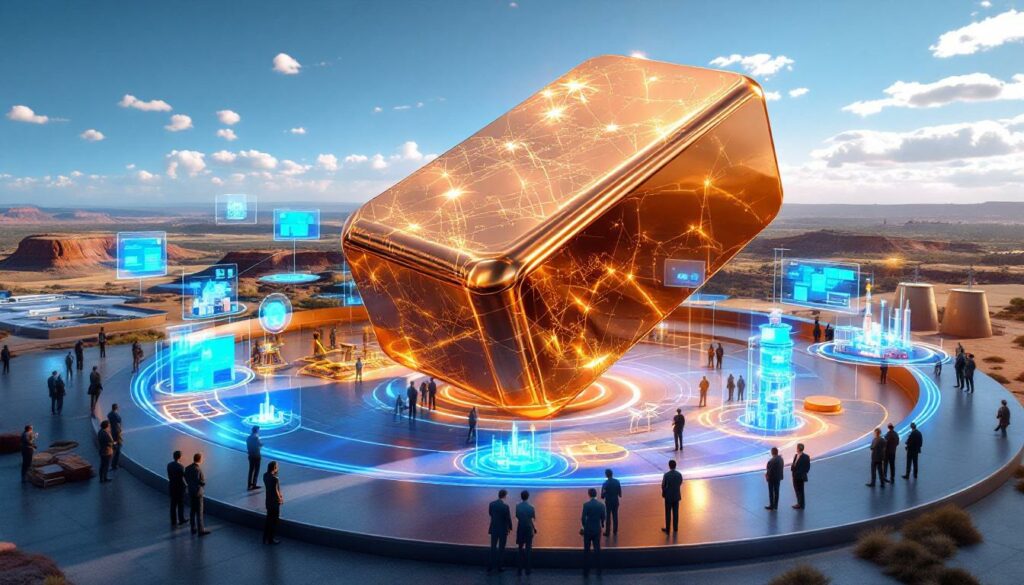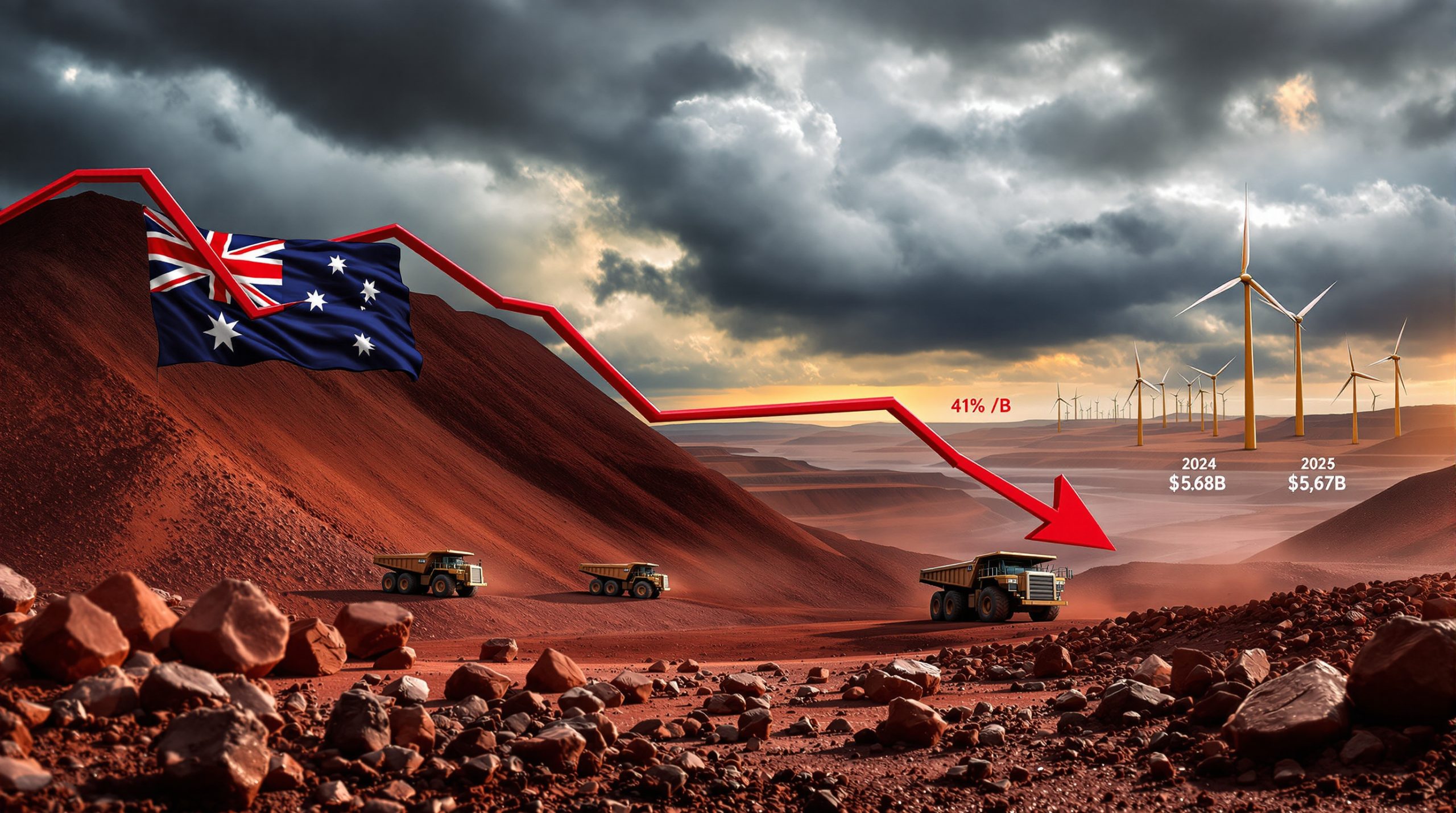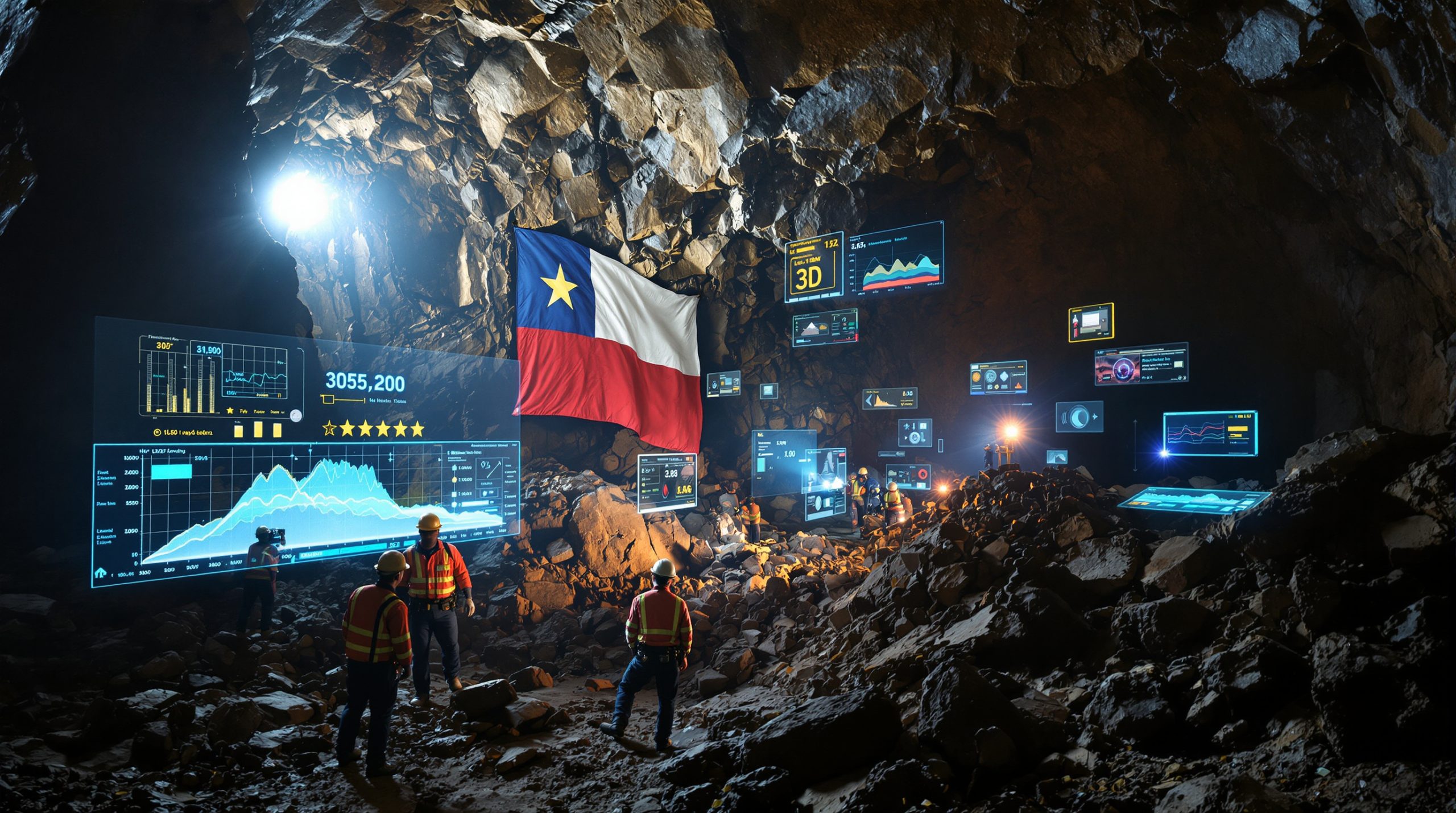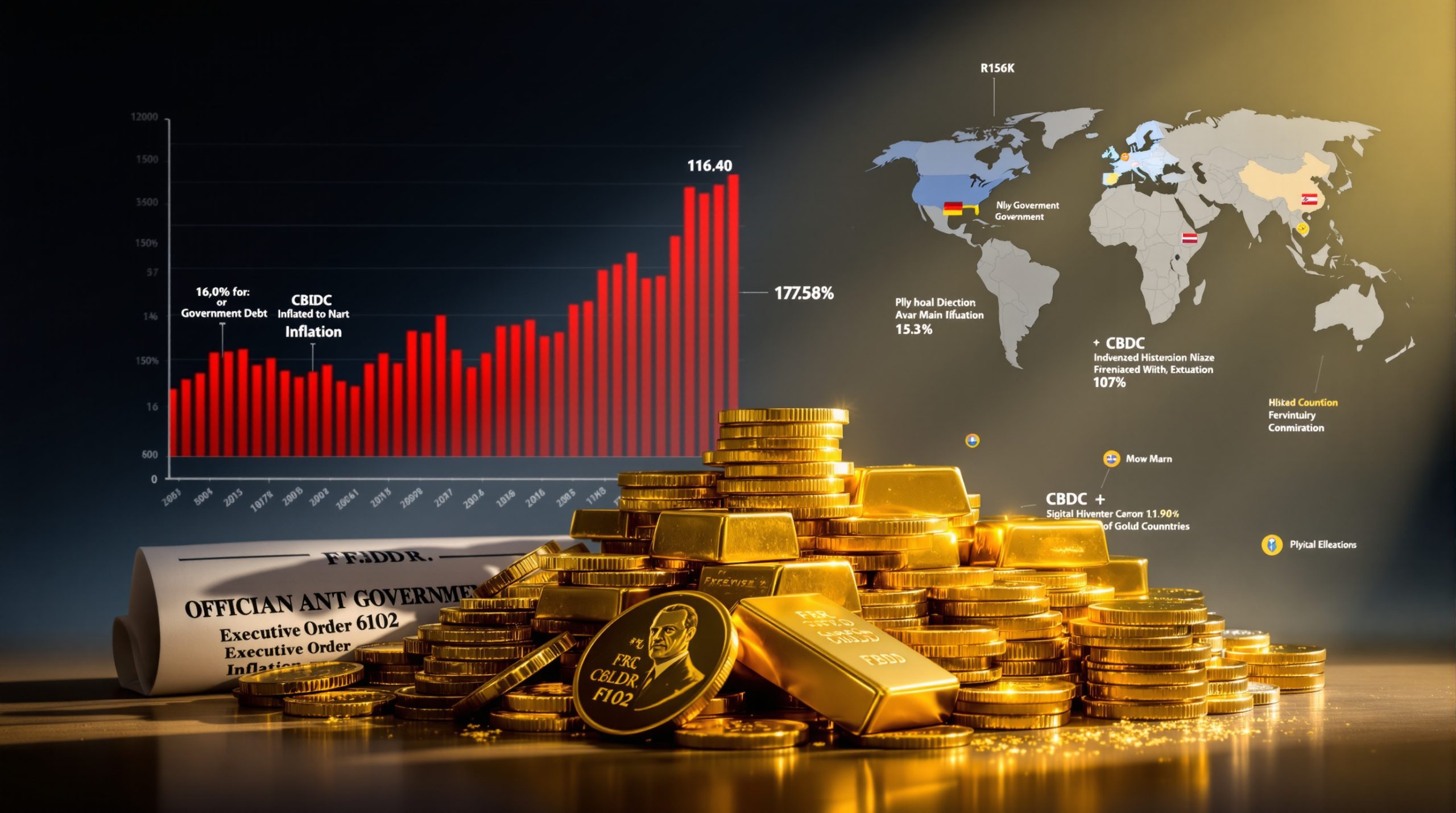Copper to the World 2025: Powering the Global Energy Transition
Australia's premier copper conference returns to Adelaide with an expanded vision, transforming from a regional initiative into a global industry forum. Scheduled for August 26-27, 2025, at the Adelaide Convention Centre, Copper to the World brings together stakeholders from across the value chain to address critical challenges facing the copper industry at a pivotal moment in its history.
The Evolution of a Global Copper Forum
What began as a South Australian mining industry event in 2015 has evolved into an international platform for collaboration and innovation. This transformation reflects the growing recognition of copper's critical role in the global energy transition and Australia's strategic position in meeting future demand.
From Regional Focus to Global Platform
Copper to the World has undergone a remarkable evolution in its decade-long history. Initially conceived as a forum to showcase South Australia's copper potential, the conference has progressively broadened its scope to address global copper supply forecast challenges and technological innovation.
The conference structure has evolved significantly, moving beyond presentations to incorporate interactive workshops, innovation showcases, and structured networking opportunities that facilitate meaningful industry connections. This evolution responds directly to participant feedback requesting more practical, application-focused content.
"The copper industry needs forums that go beyond theoretical discussions to deliver actionable insights and foster real partnerships," explains the conference organizing committee. "Our goal is to create a platform where innovations translate into implemented solutions."
South Australia's Rich Copper Legacy
South Australia's relationship with copper runs deep, dating back to 1842 when Cornish miners Charles Bagot and Francis Dutton discovered copper at Kapunda, establishing Australia's first commercially viable copper mine. This discovery transformed the young colony's economy and established South Australia's reputation as a mining powerhouse.
By the 1860s, South Australia had earned the nickname "copper kingdom," hosting world-class operations including:
- Burra Burra Mine (once known as the "Monster Mine")
- Moonta-Wallaroo copper district
- Blinman in the Flinders Ranges
These historical operations established technical expertise and infrastructure that continue to benefit the region today. Modern projects like Olympic Dam (discovered 1975) and Prominent Hill (commenced production 2009) have reinforced South Australia's position as Australia's copper heartland.
Why South Australia Remains the Copper Hub
South Australia's position as the natural home for Australia's premier copper conference is supported by compelling geological and industrial factors that make it the epicenter of the nation's copper sector.
Unparalleled Resource Concentration
South Australia hosts approximately 68% of Australia's economic demonstrated copper resources, representing a staggering 91.5 million tonnes of copper. This resource concentration provides a natural foundation for industry growth and specialized expertise.
The state's copper endowment includes:
| Deposit | Estimated Resource | Special Characteristics |
|---|---|---|
| Olympic Dam | 10.1 billion tonnes @ 0.74% copper | World's largest uranium resource, significant gold and silver |
| Prominent Hill | 130 million tonnes @ 0.9% copper | High gold credits, low arsenic content |
| Carrapateena | 840 million tonnes @ 0.8% copper | Deep underground resource with automation potential |
| Hillside | 330 million tonnes @ 0.6% copper | Coastal location with logistical advantages |
This concentration of resources has attracted significant exploration investment, with over $50 million spent on copper exploration in South Australia annually over the past five years.
Advanced Industry Ecosystem
Beyond raw resources, South Australia has developed a sophisticated ecosystem supporting copper mining innovation:
-
Research Excellence: The University of Adelaide's Institute for Mineral and Energy Resources and the Future Industries Institute at the University of South Australia conduct world-leading research on copper processing technologies.
-
Technical Service Providers: Over 300 specialized mining equipment, technology, and services (METS) companies operate in South Australia, many focused on copper-specific solutions.
-
Testing Facilities: The state hosts multiple metallurgical testing facilities and pilot plants designed specifically for copper processing technology development.
-
Skills Development: Dedicated mining education programs at South Australian universities produce over 400 mining-qualified graduates annually.
This established ecosystem makes South Australia ideally positioned to drive innovation across the copper value chain.
The 2025 Conference Theme: The Copper Advantage
The 2025 conference adopts the theme "The Copper Advantage: Powering the Future," highlighting copper's irreplaceable role in enabling the global energy transition while acknowledging the industry's responsibility to transform its production methods.
Critical Metal for the Energy Transition
Copper's unique properties make it essential for renewable energy and electrification:
- Electrical Conductivity: Copper conducts electricity 60% more efficiently than aluminum, its nearest practical alternative
- Thermal Conductivity: Excellent heat dispersion characteristics for high-load applications
- Corrosion Resistance: Durability in challenging environmental conditions
- Antimicrobial Properties: Natural resistance to bacteria, increasingly important in public infrastructure
These characteristics make copper irreplaceable in renewable energy systems, with each technology requiring significant copper inputs:
- Electric vehicles: 83kg per vehicle (4x conventional vehicles)
- Wind turbines: 2.5-6.4 tonnes per MW
- Solar PV: 5 tonnes per MW
- Energy storage systems: 0.8-1.2 tonnes per MW
"The energy transition simply cannot happen without copper. No other material offers the combination of conductivity, durability, and formability at a practical cost. As we accelerate toward net-zero goals, copper demand will grow exponentially." – International Copper Association
Sustainable Production Imperative
The conference theme also emphasizes the industry's responsibility to produce copper with minimal environmental impact. This requires innovation across several dimensions:
- Water Conservation: Developing technologies that reduce freshwater consumption by 30-50%
- Energy Efficiency: Implementing processes that lower energy requirements per tonne produced
- Community Engagement: Building meaningful partnerships with communities near operations
- Biodiversity Protection: Minimizing and mitigating impacts on natural ecosystems
- Circular Economy: Maximizing recycling and designing for material recovery
The 2025 program will feature case studies of operations successfully implementing these sustainable approaches, demonstrating that environmental responsibility and profitability can coexist.
Comprehensive 2025 Program Structure
The 2025 conference features a multi-stream program designed to address challenges across the copper value chain. This structure allows participants to customize their experience based on specific interests and technical focus areas.
Specialized Technical Streams
The program divides into six concurrent technical streams, each addressing critical aspects of copper production:
-
Advanced Exploration Techniques
- Next-generation geophysical methods for deep detection
- Machine learning applications in target generation
- Drone and satellite-based remote sensing innovations
- Real-time drilling data analysis and interpretation
-
Mine-to-Mill Optimization
- Integrated planning approaches for resource maximization
- Grade engineering strategies for marginal deposits
- Continuous improvement methodologies for existing operations
- Case studies of successful optimization projects
-
Artificial Intelligence Integration
- Predictive maintenance systems for critical equipment
- Production forecasting and scenario modeling
- Automated quality control and grade optimization
- Implementation challenges and solution pathways
-
Process Automation
- Autonomous haulage and drilling systems
- Remote operations centers and workforce implications
- Digital twin modeling for process optimization
- Cybersecurity considerations for connected operations
-
Water and Tailings Solutions
- Dry stacking and paste tailings technologies
- Water recovery and recycling innovations
- Passive treatment systems for mine water
- Tailings valorization opportunities
-
Emerging Energy Strategies
- Renewable integration for mining operations
- Hydrogen applications in copper production
- Battery storage solutions for remote sites
- Electrification of mining fleets
Each stream combines academic research presentations with practical case studies and implementation guidance to ensure content remains relevant and actionable.
Innovation Showcases
The 2025 program introduces several new features designed to highlight cutting-edge technologies:
- Innovation Hour: Daily rapid-fire pitch sessions where technology providers present 5-minute overviews of breakthrough solutions
- Technology Demonstration Zone: Dedicated space for hands-on interaction with emerging technologies
- Startup Competition: Pitch contest for early-stage companies developing copper-focused innovations
- Virtual Reality Experience Center: Immersive demonstrations of mining technologies in simulated environments
These elements create multiple pathways for technology providers to connect with decision-makers and potential customers.
Industry Leaders at the Forefront
The 2025 conference features presentations from influential figures shaping the future of copper production in Australia and globally.
Keynote Presenters
Anna Wiley, BHP Asset President Copper South Australia
Wiley will discuss BHP's vision for expanding South Australia's copper production through the Olympic Dam Resource Development Strategy. Her presentation will outline how technological innovation is enabling access to previously uneconomic resources within the world's fourth-largest copper deposit.
"South Australia stands at the threshold of a copper renaissance," Wiley noted in a recent industry forum. "The combination of world-class resources, technical expertise, and supportive policy creates the perfect environment for responsible growth."
Bob Fulker, Hillgrove Resources CEO
Fulker will share insights from the recently restarted Kanmantoo copper mine, South Australia's newest copper producer. His presentation will focus on practical lessons from implementing innovative mining methods in a brownfield context.
The Kanmantoo operation serves as a case study in modern, efficient underground mining, employing advanced automation and real-time monitoring to maximize resource recovery while minimizing environmental impact.
Dr. Christine Gibbs Stewart, Austmine CEO
Dr. Gibbs Stewart will address the critical role of the METS sector in enabling sustainable copper production growth. Her presentation will highlight how collaborative innovation models between miners and technology providers can accelerate solution development.
"The copper challenge isn't just about finding and mining more resources," Dr. Gibbs Stewart explains. "It's about fundamentally reimagining how we extract and process copper to meet environmental expectations while delivering the volumes the world needs."
Technological Transformation in Copper Production
The copper industry is undergoing rapid technological evolution across all aspects of the value chain. The 2025 conference will showcase innovations that are reshaping how copper is discovered, extracted, and processed.
Exploration Breakthroughs
Traditional exploration methods have limited effectiveness for identifying deeper, more complex copper deposits. Recent technological innovations are transforming exploration success rates:
-
Passive Seismic Tomography: Non-invasive deep imaging technology that maps subsurface structures without requiring artificial energy sources, reducing environmental impact while providing detailed data at depths exceeding 2km.
-
Hyperspectral Core Scanning: Automated systems that analyze drill core samples using multiple wavelengths of light to identify mineralogy with unprecedented precision, enabling better resource modeling and processing decisions.
-
Ambient Noise Tomography: Technique that uses natural background seismic activity to create detailed subsurface images, particularly effective in areas with challenging surface conditions.
-
Predictive Analytics Platforms: AI systems that integrate multiple data streams (geological, geochemical, geophysical) to identify patterns associated with copper mineralization that human analysts might miss.
These technologies have increased exploration success rates by approximately 25% while reducing the required drilling meterage for resource definition by up to 40%.
Processing Innovations
Copper processing has historically been energy-intensive and water-dependent. New approaches are addressing these challenges:
-
Low-Temperature Leaching: Biologically-assisted leaching processes that operate at near-ambient temperatures, reducing energy requirements by up to 40% compared to conventional methods.
-
Microwave-Assisted Comminution: Pre-treatment of ore using microwave energy to create micro-fractures along mineral boundaries, reducing grinding energy requirements by 15-25%.
-
Sensor-Based Sorting: Optical, X-ray, and electromagnetic sensors that identify and reject waste rock before energy-intensive grinding, potentially reducing energy and water consumption by 10-20%.
-
Precision Flotation Control: Real-time analysis of flotation performance using machine vision and advanced sensors, enabling automatic adjustments that increase recovery rates by 2-5%.
"The most significant advances in copper processing aren't single breakthrough technologies but integrated systems that connect previously separate steps into a seamless, optimized flow." – International Mining Technology Research Center
Data-Driven Operations
The integration of digital technologies is creating unprecedented visibility and control across copper operations:
- Digital Twins: Virtual replicas of physical assets and processes that enable scenario planning and optimization without disrupting actual operations
- Integrated Operations Centers: Centralized facilities that monitor and control multiple mine sites remotely, improving decision-making and resource allocation
- Predictive Maintenance Systems: AI-powered tools that identify potential equipment failures before they occur, reducing downtime by up to 70%
- Real-Time Grade Control: Systems that continuously monitor ore quality during extraction, enabling dynamic blending and processing decisions
These digital capabilities typically deliver productivity improvements of 10-15% while reducing safety incidents by 20-30%.
Copper's Critical Role in the Energy Transition
Copper demand is forecast to grow dramatically as the world pursues decarbonization goals. Understanding this growth trajectory is essential for industry planning and investment decisions.
Exponential Demand Growth
Global copper demand is projected to increase from approximately 25 million tonnes annually in 2022 to over 50 million tonnes by 2050, primarily driven by:
- Renewable Energy Expansion: Solar and wind capacity is forecast to grow by 300-400% by 2050
- Electric Vehicle Adoption: EVs are projected to represent 60-70% of new vehicle sales by 2040
- Grid Modernization: Upgrading and expanding transmission infrastructure requires massive copper inputs
- Energy Storage Deployment: Battery systems for grid stability and renewable integration
This demand growth creates both opportunity and responsibility for copper producers to scale production sustainably.
| Sector | Current Annual Copper Demand | Projected 2040 Demand | Growth Factor |
|---|---|---|---|
| Renewable Energy | 1.2 million tonnes | 4.5 million tonnes | 3.8x |
| Electric Vehicles | 0.5 million tonnes | 4.0 million tonnes | 8.0x |
| Grid Infrastructure | 3.8 million tonnes | 8.2 million tonnes | 2.2x |
| Energy Storage | 0.2 million tonnes | 1.5 million tonnes | 7.5x |
| Traditional Uses | 19.3 million tonnes | 23.8 million tonnes | 1.2x |
Supply Challenges
Meeting this demand presents significant challenges:
- Resource Depletion: Average global copper grades have declined from approximately 1.8% in 1900 to around 0.5% today
- Discovery Deficit: Despite increased exploration spending, major new discoveries have become increasingly rare
- Development Timelines: New copper mines typically require 7-10 years from discovery to production
- Capital Intensity: Modern copper mines require $15,000-$30,000 capital investment per tonne of annual production capacity
- Water Constraints: Many copper-rich regions face severe water scarcity issues
"The copper industry faces a perfect storm of rising demand and increasingly complex supply challenges. Innovation isn't optional—it's essential for meeting global needs." – Global Copper Alliance
Australia's Strategic Position
Australia aims to increase its copper production from approximately 900,000 tonnes annually to over 2 million tonnes by 2030, positioning it as the world's third-largest producer. Achieving this goal requires:
- Accelerating exploration success through technology adoption
- Streamlining approval processes while maintaining environmental standards
- Developing innovative processing solutions for complex, lower-grade ores
- Addressing infrastructure constraints in water, energy, and logistics
- Building and maintaining community support through demonstrated benefits
The Copper to the World conference serves as a crucial forum for addressing these interconnected challenges. Recent copper price predictions suggest favorable market conditions that could support increased investment in Australian copper resources, further enhancing the country's strategic position in the global market.
Networking and Collaboration Opportunities
The 2025 conference design emphasizes meaningful connections that translate into practical outcomes for participants.
Structured Networking Events
The program includes several dedicated networking opportunities:
- Industry Roundtables: Facilitated small-group discussions on specific technical challenges
- Speed Networking Sessions: Structured brief meetings between miners and solution providers
- Regional Focus Groups: Connections between stakeholders operating in the same geographic areas
- Investment Matchmaking: Curated meetings between project developers and potential investors
These structured interactions ensure participants can efficiently connect with relevant contacts, maximizing the value of attendance. Additionally, the conference will highlight opportunities for cross-border copper investments that could accelerate development of critical projects.
Exhibition and Technology Showcase
The exhibition floor features over 100 organizations demonstrating the latest technologies and services. Unique elements include:
- Innovation Pods: Dedicated spaces for emerging technology companies
- Problem-Solution Matching Board: Interactive display connecting industry challenges with potential solutions
- Technical Poster Sessions: Research presentations in an accessible format
- Hands-On Demonstration Zones: Areas for equipment testing and technology trials
The exhibition design focuses on facilitating meaningful conversations that extend beyond the conference itself. With [surging copper investments](https://discoveryalert.com.au/news/copper-demand-surges-electr
Ready to Capitalise on the Next Major Mineral Discovery?
Discovery Alert's proprietary Discovery IQ model delivers real-time alerts on significant ASX mineral discoveries, transforming complex mining data into actionable investment insights. Explore why major mineral discoveries can lead to significant market returns by visiting our dedicated discoveries page and begin your 30-day free trial today.




